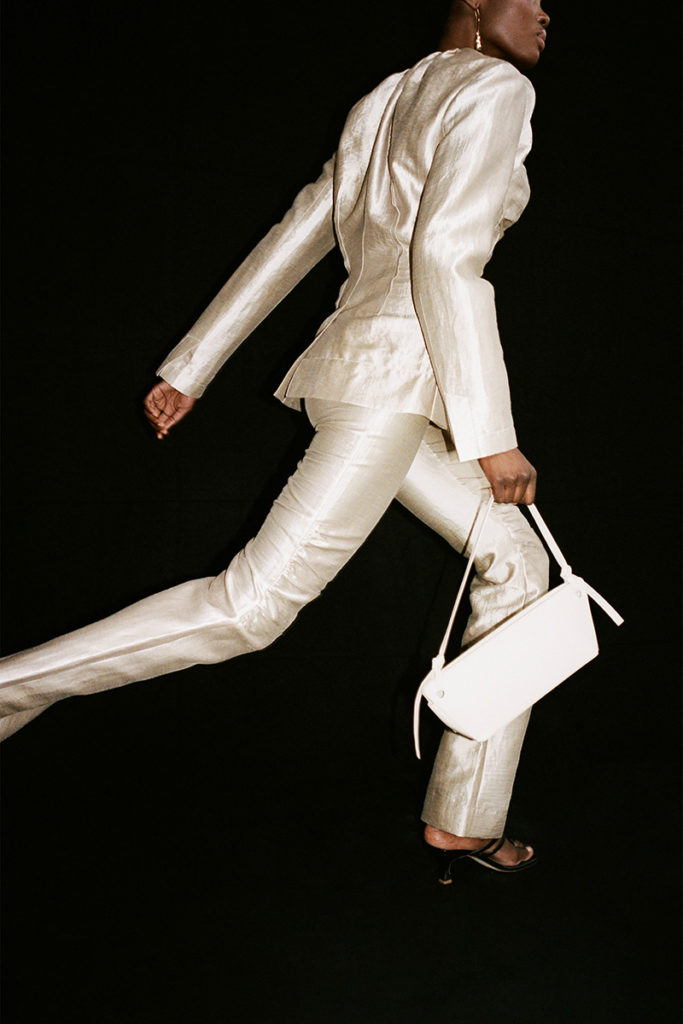The flashing lights, drinks in hand, raised voices over the reverb of a familiar track, an involuntary alchemy of perfumes and sweat, and a crowd that has gathered in a space for the same reason as you have: to have a good time. Since the closure of bars and clubs in March, nightlife in Singapore has come to a standstill and so have our Friday night bests.
There’s something incredibly freeing and strangely spiritual about losing yourself in music and movement with your friends. It may well be the momentary anonymity of being elbow to elbow with a stranger in a crowd. It could also be the thrill of reclaiming agency in a space where your only objective is to have fun. It’s why nightlife dressing commands a totally different headspace than any other social activity.

Depending on the dress code of your party destination, what you choose to don for the dance floor might range from a slinky slip dress to an oversized band tee with biker shorts. No matter your choice of drink or destination, your party-going attire represents your after-hours alter-ego, one that allows you to have full control over how to look, move and speak.
“What we wear changes our posture, how we move and also our state of mind, while dance disrupts the functionality of everyday movement,” notes Angelene Wong, who is researching the link between fashion and performance. “Together, fashion and dance help us transcend our personal and collective normality.”
“The public space of display is now at our fingertips, it’s no longer a destination.”
Known for its saccharinely retro taste in interiors and music, Cherry Discotheque is one place missed by nightcrawlers and party-goers seeking a laidback but nonetheless good time. “In Cherry, you would see a diverse pool of communities—from the punk rock kids to the K-pop stans just coming together to have a great time,” says Wayne Chiam, managing director of Cherry Discotheque. “Cherry-goers also tend to love vintage thrifts, early 2000s aesthetics, a play on layers—anything goes, really.”
Over at Marquee, the dress code is smart casual and stylish. Pre-pandemic, the cavernous interior and immersive light effects of the Marina Bay Sands-located nightclub went hand in hand with what attendees gravitated to sartorially—glitz and glamour, no holds barred. “Party revellers were often decked out in ensembles that are glamorous, eye-catching and memorable,” a Marquee spokesperson tells Vogue Singapore.

For Marquee, the closure of Singapore’s bars and clubs hasn’t stopped it from resuming nightly festivities. The nightclub has made the shift online, holding virtual events that still allow guests and attendees to paint the town red from within the comfort of their own homes.
“This correlation between space, movement and dress in terms of the club is less apparent now because it seems many people dress up to display themselves online much more than they do in the space of the club,” Wong notes. “The public space of display is now at our fingertips, it’s no longer a destination.”
PFH (partying from home) has a few things going for it, too: for one, you’re freed of practicalities like which bag to use to for your night-out essentials, or whether your feet can withstand the wait for the line to get in. Partying in the same place you can retreat to your bed after a long night? Sounds like the best of both worlds.

Dressing up for a virtual rave or party might feel counterintuitive at first—why should you put in the effort of dressing up if you’re just metres away from your sofa? But Marquee has seen a new form of nightlife dressing emerge, one that strikes a delicate balance between comfort, style and the excitement that once characterised the occasion.
“While most guests dress simpler while enjoying a slice of Marquee and nightlife in the comfort of their own homes, many are still adventurous and creative with the way they present themselves online,” says the Marquee spokesperson. “They pair the simplest shirts and dresses with flashy virtual backgrounds, and the fanciest party masks with a lot of bling to boot.”
The ritual of dressing up to go out is more than the pursuit of pomp and glamour.
The limited canvas that is the protective—and compulsory—layer on our faces presents an opportunity to get creative, Wong adds. With that said, as we’ve witnessed first-hand from months of spotty Zoom meetings and glitchy FaceTime calls, there’s nothing like the real thing.

“The club creates this irreplaceable feeling,” Wong says, drawing from her own experiences with EDM, trap and hip-hop parties. “Amidst the pulsing music and flashing strobe lights is a space between the visible and invisible, where club-goers can explore themselves and others through movement and what they wear.”
The ritual of dressing up to go out is more than the pursuit of pomp and glamour. For many of us, shimmying into a party dress, swiping on lipstick with our girlfriends and taking the town in our fanciest shoes are vestiges of a time when physical proximity was electric and recharging.
For more stories like this, subscribe to the print edition of Vogue Singapore.





